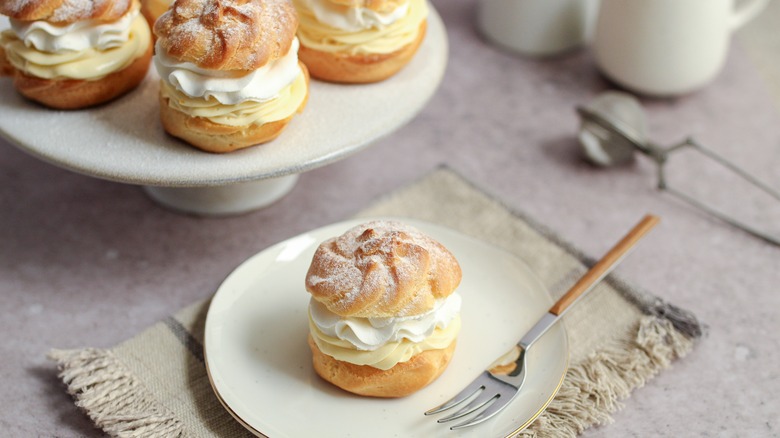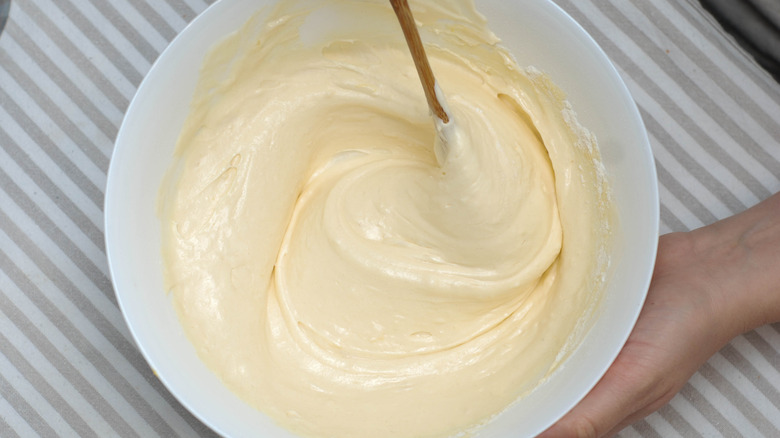The Biggest Mistake You're Making With Your Pastry Cream
Pastry cream adds a luscious richness and decadence to a wide array of sweet treats, from cream puffs to Italian lobster tails. However, there's one common misstep that even the most seasoned bakers can fall victim to — overcooking. While this creamy, delicious filling can set the stage for other components of the dessert to shine, overcooking is a frequent mistake that can detract from the overall quality of the dessert. When pastry cream is overcooked, the once silky-smooth texture becomes grainy and lumpy. Furthermore, the delicate flavors become muted, or even burnt. It's a heartbreaking outcome that can leave even the most meticulously crafted desserts feeling lackluster and disappointing.
So, why is it so easy to overcook pastry cream? The answer lies in its delicate nature. Pastry cream is essentially a custard made from milk, eggs, sugar, and flour or cornstarch. When heated, the eggs in the mixture coagulate, thickening the cream to a velvety consistency. However, if the cream is heated for too long or at too high a temperature, the eggs can become overcooked, resulting in a curdled, unpleasant texture — or even scrambled eggs in your cream. Nobody wants that.
Follow these tips to avoid overcooking pastry cream
To avoid the dreaded fate of overcooked pastry cream, it's essential to exercise caution and precision throughout the cooking process. To help minimize the risk, keep a close eye on the temperature as it cooks. Use low to medium heat and stir continuously to prevent hot spots and ensure even cooking. A heavy-bottomed saucepan distributes heat more evenly, reducing the likelihood of scorching or overheating the cream, too.
Pastry cream is ready when it coats the back of a spoon like pudding or has large, bursting bubbles that form slowly. Avoid cooking it beyond this point. As soon as the pastry cream reaches the desired consistency, remove it from the heat and transfer it to a bowl to cool. This helps to bring the cooking process to an immediate stop and prevent further thickening. If you notice any lumps or curdled bits in your pastry cream, you can strain it through a fine-mesh sieve to remove them and achieve a smoother texture. By following these tips and exercising care and attention to detail, you can ensure that your DIY pastry cream turns out perfectly every time.

